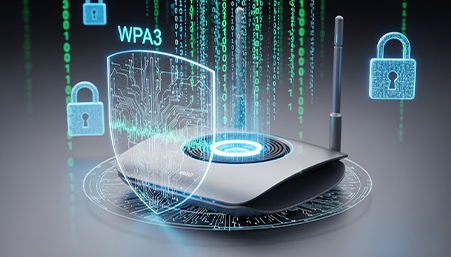What is WPA3? The Future of Wi-Fi Protected Access Security

What Is Wi-Fi Protected Access 3?
(And Why Does Your Wi-Fi Need It Today?)
Have you been hearing about WPA3 lately and wondering if it's worth enabling on your Wi-Fi router? The answer is a resounding yes.
Cyber threats are getting smarter by the day and the old protection standards like WPA and WPA2 simply don’t cut it anymore. That’s where the latest Wi-Fi Protected Access 3 (WPA3) standard steps in to save the day.
Let’s take a closer look at why WPA3 is the future of Wi-Fi protection standards and how you can enable it on your router.
So, What Exactly Is WPA3 Security?
WPA3, or Wi-Fi Protected Access 3, is the next generation of wireless security created by the Wi-Fi Alliance. It replaces its predecessors WPA and WPA2, which despite being widely used have vulnerabilities that hackers can exploit. This new standard strengthens Wi-Fi network security with advanced encryption, smarter password, and better privacy in public networks.
Key WPA3 Security Features You Should Know

- Stronger Encryption: WPA3 introduces up to 192-bit encryption in Enterprise mode, giving you a higher level of defense than WPA2.
- Better Defense Against Password Attacks: Thanks to Simultaneous Authentication of Equals (SAE), WPA3 blocks brute-force attacks where hackers keep guessing your Wi-Fi password.
- Individualized Data Encryption: On public Wi-Fi, WPA3 ensures your data is encrypted separately from other users, keeping your information private.
- Forward Secrecy: Even if someone manages to steal your password later, they can’t access your past sessions.
- Simpler Setup for Smart Devices: WPA3 makes it easier to connect to IoT devices that don’t have displays or complicated interfaces.
Comparing WPA2 and WPA3 Features
| Feature | WPA2 | WPA3 |
|---|---|---|
| Security Level | Strong | Stronger |
| Encryption Protocol | AES (CCMP) | AES (GCMP-256) |
| Key Exchange | PSK (Pre-Shared Key) | SAE (Simultaneous Authentication of Equals) |
| Brute-Force Protection | Limited | Strong (blocks online attacks) |
| Public Wi-Fi Security | No individual encryption | Individual encryption |
| Forward Secrecy | Not guaranteed | Guaranteed |
| Device Support | Widely supported | Requires newer hardware |
Why Make the Switch?
Here’s what you gain with WPA3:
- Stronger Wi-Fi security for personal and business use.
- Safer browsing in coffee shops, airports, and other public spaces.
- Future-proof protection that adapts to new cyber threats.
- More secure connections for all your smart home devices.
- Peace of mind knowing your private data is safer than ever.
Upgrading To WPA3 Is Easier Than You Think!
Here’s how to enable WPA3 on your Wi-Fi:
- Log into your router’s admin panel (usually via a web browser).
- Open Wireless Settings.
- Under Security Options, choose WPA3-Personal (or WPA3/WPA2 mixed mode if some devices don’t support WPA3).
- Save your settings and reconnect your devices.
Note: If your router doesn’t list WPA3, you may need a firmware update or a new router that supports WPA3.
The Bottomline: WPA2 or WPA3… Which Is Better?
While WPA2 was the standard for years, WPA3 is clearly the stronger choice. WPA2 lacks the advanced security protocols of WPA3 and is more vulnerable to hacking. If your device supports it, enabling WPA3 is the best way to protect your WiFi connection.
WPA3 Wi-Fi Security FAQs
1. What is WPA3 in simple terms?
WPA3 (Wi-Fi Protected Access 3) is the latest Wi-Fi security standard that adds stronger encryption, better passwords and privacy on public networks.
2. Is WPA3 better than WPA2?
Yes. WPA3 has stronger encryption, blocks brute force attacks better, encrypts each user’s data on public Wi-Fi and has forward secrecy – much more secure than WPA2.
3. Do I need a new router for WPA3?
Not always. Some routers can get WPA3 support through a firmware update. If your router doesn’t list WPA3 in security settings after updating, you may need a newer model that supports it.
4. Is WPA3 necessary for home Wi-Fi?
If your devices support it, yes. WPA3 adds a lot of protection against hacking, keeps public network browsing safer and future proofs your Wi-Fi security.
5. How do I enable WPA3 on my router?
Login to your router’s admin panel, go to Wireless Security settings, select WPA3-Personal (or WPA3/WPA2 mixed mode), save and reconnected your devices.
6. Does WPA3 slow down Wi-Fi speed?
In most cases, no. WPA3’s security improvements don’t slow down your Wi-Fi for everyday use, but older devices may experience minor performance changes.
